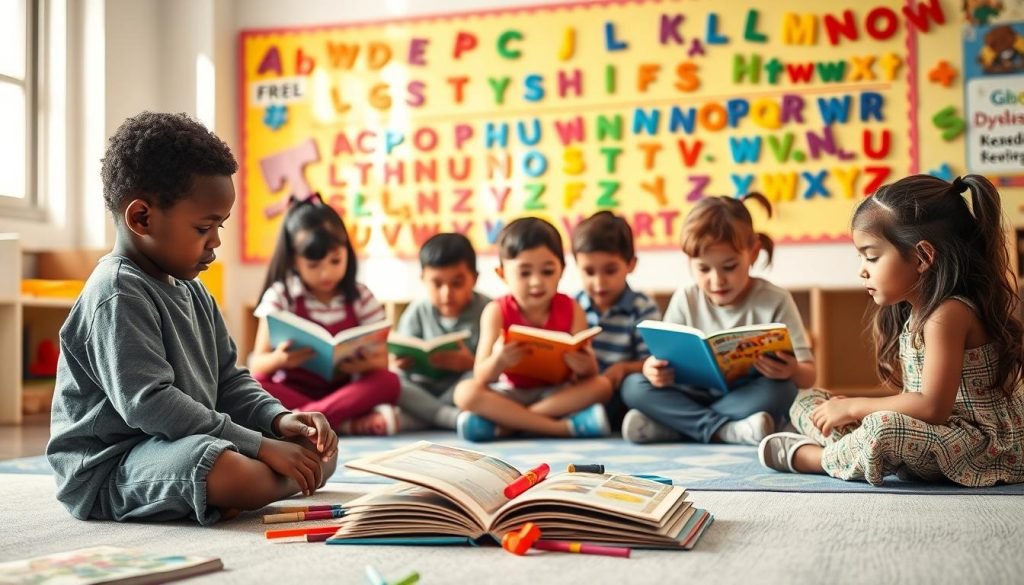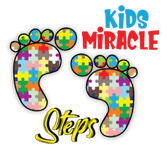About 1 in 10 people have dyslexia. This means a lot of us are finding ways to help our kids read better at home. We want to create a loving environment where learning and bonding can happen. Reading with your child each day can boost their reading skills and make your bond stronger. Your role is very important in helping them progress.
When helping with reading at home, it’s important to use systematic phonics. This approach works better than whole language or balanced literacy methods for dyslexic kids. Research has found that dyslexic kids may need 2 to 3 times more time to read than other kids. So, we must use special strategies that work for them.
Understanding Dyslexia and Its Impact on Reading
Understanding dyslexia is key for parents to help their kids. Dyslexia is a learning disability that makes reading hard by affecting how letters and sounds are matched. It is believed to affect one in five children. These challenges show up early, making it tough for kids to learn new words, read smoothly, and sometimes they mix up letters and numbers.
Most children with learning difficulties have dyslexia, and it’s wrongly thought to affect boys more than girls. Research shows it impacts both equally. Dyslexia can cause a big gap between a student’s potential and their actual achievement. This difference is noticeable from the first grade. It can affect how kids feel and act around others, leading to low self-esteem and withdrawal.
It’s important to diagnose dyslexia early. Though some schools wait until the third grade to test for it, starting early is better. The sooner a child gets help, the better their chances for success. Programs like The Wilson Method and the Orton-Gillingham Approach really help. Also, multisensory education can boost reading skills in just 12-20 weeks of practice.
Dyslexia affects more than reading. It can make it hard to follow directions, tell time, and understand logos. Knowing about these effects helps in giving complete support for a child’s growth. Tools like text-to-speech software can make comprehension 30% better for dyslexic students. Checking progress regularly also motivates students by showing them real improvement.
Creating a Supportive Learning Environment
Creating a home environment that supports dyslexia is key to helping your child succeed both in school and emotionally. Start by setting up a specific area for studying. This tells your child it’s time to focus and helps reduce their stress.
Use things like calendars and charts to help set goals and track progress. These tools make learning tasks clearer and more engaging for kids with dyslexia. Also, ensure their study space is quiet and has everything they need. This keeps distractions low. Getting enough sleep is critical for kids with dyslexia. Make sure they stick to a regular bedtime. A good night’s rest helps with focus and memory, which can be tough for them.
Create a space where mistakes are okay, and celebrate every small win. This boosts their confidence and encourages them to keep trying. Remember, supporting a child with dyslexia means caring for both their learning and emotional needs.
A good balance of structure and flexibility in their learning environment can make a big difference. This setup helps them feel safe and able to do their best. Such a positive atmosphere is crucial for their education journey.
Effective Reading Strategies for Dyslexic Children
Helping dyslexic children read better can be tough, but the right strategies make a big difference. Here are some tips to boost reading skills in kids with dyslexia. One important strategy is focusing on sight words, which are common words kids should recognize quickly. Adding sight words to daily reading can improve speed and give kids more confidence.

Another useful method is repeated reading. It means reading the same text many times until it becomes familiar. This can help increase reading speed, accuracy, and confidence.
Mnemonic devices are also helpful. They are tricks to help remember hard information by linking it to something easy to remember. For example, connecting a hard word with a picture makes it easier to remember.
Using different tools and help can also make these strategies better. Research shows that tools like text-to-speech programs can make reading understanding up to 20% better. Giving more time to read can improve performance by 25%.
Here’s an overview of useful reading strategies for kids with dyslexia:
| Strategy | Benefits |
|---|---|
| Sight Words | Enhances fluency and word recognition |
| Repeated Reading | Improves speed, accuracy, and confidence |
| Mnemonic Devices | Assists memory and retention |
| Assistive Technology | Boosts reading comprehension |
| Extra Time | Increases performance on reading tasks |
Mixing these tips into your daily teaching can really help your child read better and understand more. To back up your child’s learning, find helpful tools and activities at home speech therapy exercises. Adapting your help to fit what your child needs, along with encouraging them often, can lead to big improvements in reading.
How Can Repetition Aid Dyslexic Child Reading Skills
Repetition is very important for kids with dyslexia to learn how to read well. Studies show that dyslexic learners might need to go over things about five times more than other students. This makes the practice of reading again and again very useful.
Repetition in learning for dyslexic kids means more than just remembering by heart. It involves using seeing, hearing, and touching to help make stronger brain connections. This way, what they learn sticks around for the long haul. Teachers and parents focus on regular, structured practice to make this happen.
For dyslexic students, learning something over and over is crucial to really understand it. The benefits of reading the same thing many times include better brain connections and easier access to information later on. How often a student needs to repeat something can vary a lot, depending on their learning speed:
| Student Type | Repetitions Needed |
|---|---|
| Gifted Student | 1-4 |
| Typical Student | 4-14 |
| Struggling Student | 14-40 |
| Student with Dyslexia | 40-200 |
The numbers tell us how crucial repetition is for dyslexic learners. They need ongoing practice to blend sounds with letters in a way that builds strong reading skills. Repeating lessons in creative ways is key to teaching students with dyslexia. It’s not just helpful; it’s necessary.
Encouraging and Motivating Your Child
It’s crucial to create a supportive atmosphere at home for kids with dyslexia. We should always celebrate their efforts and small victories. Doing so boosts their confidence and helps them face reading challenges more eagerly.
Breaking challenges into smaller, reachable goals can build a child’s confidence. When tasks seem manageable, it focuses them on success, not difficulties. For example, aiming to finish a chapter instead of a whole book can maintain their motivation.
Using their interests can also draw them into learning. Research shows that dyslexic students often understand challenging texts if they find the topic interesting. So, including their favorite subjects in reading could greatly improve their learning.
Removing time pressure is another effective method. According to Sally Shaywitz’s research, extra time lowers students’ stress and boosts comprehension. This is a simple yet impactful way to help.
- Implement positive reinforcement
- Set achievable, incremental goals
- Incorporate personal interests into reading
- Allow additional time for reading assignments
Engaging in group activities can also be really helpful. Dyslexic children often have good listening and speaking skills. Working in small groups allows them to learn from peers and builds their confidence. These strategies aim to improve reading skills and empower our kids with lasting self-assurance.
| Strategy | Impact |
|---|---|
| Positive Reinforcement | Improves engagement by up to 30% |
| Setting Achievable Goals | Encourages sustained motivation |
| Extra Time on Tasks | Reduces anxiety and enhances understanding |
| Cooperative Learning | Builds confidence through peer support |
Conclusion
Talking about helping with dyslexia, it’s key to be patient and understanding. It’s essential to cheer on every little win they have. This way, by supporting their learning at home, they get the help they need where they’re most comfortable.
Learning certain sounds in order can increase reading by 10-20% over other ways. Also, extra help at home, like tutors or fun reading apps, can really boost their skills. Starting intense reading help early, in second or third grade, can improve their reading by 30%.
Our last thoughts on helping dyslexic kids focus on the need to work on sounding out words, since 70-80% of kids with reading issues struggle here. Celebrate their steps forward, look for new tools, and keep up the support at home. By doing these things, we help them succeed for life.






